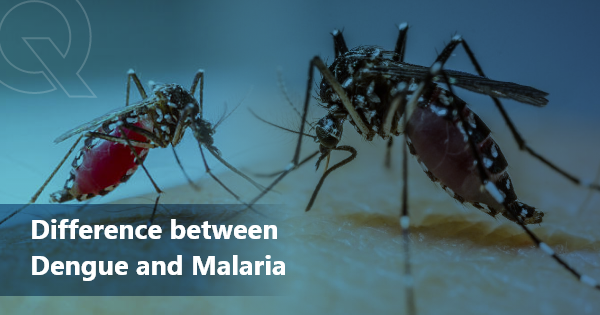Dengue fever is a mosquito-borne viral infection caused by the dengue virus, primarily transmitted through the Aedes mosquito species. It is a significant public health concern in tropical and subtropical regions, affecting millions of individuals annually. One of the characteristic features of dengue fever is thrombocytopenia, a condition marked by a decrease in platelet count. This article aims to delve into the mechanisms underlying platelet count decrease in dengue fever, shedding light on the complex interplay between the virus, the immune system, and the host.
The Role of Platelets
Platelets, also known as thrombocytes, are tiny blood cells that play a crucial role in the blood clotting process. They are produced in the bone marrow and released into the bloodstream. In the event of an injury, platelets rush to the site to form a plug, preventing excessive bleeding. Thus, maintaining an adequate platelet count is essential for normal hemostasis.
Thrombocytopenia in Dengue Fever
Thrombocytopenia is a hallmark of dengue fever, with platelet counts dropping to critical levels in severe cases. This phenomenon is a result of multiple complex mechanisms:
1. Direct Viral Action
The dengue virus has a direct impact on the bone marrow, where platelets are produced. Studies have shown that the virus can infect megakaryocytes, which are the precursor cells of platelets. This leads to a reduction in the production of platelets.
2. Immune System Response
In dengue fever, the immune system is triggered to respond aggressively to the virus. This immune response involves the production of various cytokines, which are signaling molecules. Some of these cytokines, such as tumor necrosis factor-alpha (TNF-α) and interleukin-6 (IL-6), have been found to inhibit platelet production and increase platelet destruction.
3. Antibody-Dependent Enhancement (ADE)
ADE is a phenomenon in which non-neutralizing antibodies enhance the entry of the virus into immune cells, potentially leading to more severe manifestations of the disease. ADE can also lead to increased platelet destruction.
4. Vascular Leakage
Dengue fever is associated with increased vascular permeability, leading to leakage of plasma from the blood vessels. This results in hemoconcentration, a condition where the concentration of cells and cellular elements in the blood is elevated. While the total number of platelets may not be decreased, the relative concentration appears lower.
5. Liver Dysfunction
The liver plays a crucial role in regulating various components of the blood, including platelets. In dengue fever, liver dysfunction can occur, affecting its ability to produce certain clotting factors and influencing platelet function.
Clinical Implications
Thrombocytopenia in dengue fever can have significant clinical implications:
1. Risk of Hemorrhage
A low platelet count increases the risk of bleeding, ranging from mild petechiae to more severe hemorrhagic manifestations, such as gastrointestinal bleeding or intracranial hemorrhage.
2. Monitoring and Management
Regular monitoring of platelet counts is crucial in managing dengue fever. In severe cases, platelet transfusions may be necessary to prevent life-threatening bleeding.
3. Dengue Shock Syndrome (DSS)
Severe cases of dengue fever can progress to dengue shock syndrome, characterized by rapid onset of shock due to plasma leakage. Thrombocytopenia is often a prominent feature in DSS.
Additional Factors Influencing Thrombocytopenia in Dengue Fever:
1. Platelet Consumption and Destruction
Alongside reduced platelet production, there is an increased consumption and destruction of platelets in dengue fever. This occurs due to the formation of immune complexes and the activation of the complement system, both of which contribute to platelet clearance.
2. Endothelial Dysfunction
Dengue virus can directly infect endothelial cells lining the blood vessels, leading to endothelial dysfunction. This impairs the normal regulation of platelet adhesion and aggregation, further exacerbating thrombocytopenia.
3. Cytokine Storm
Severe cases of dengue fever are associated with a cytokine storm, an overwhelming release of pro-inflammatory cytokines. This intense immune response contributes to the disruption of normal hematopoiesis in the bone marrow, including the production of platelets.
4. Genetic Predisposition
Some individuals may be genetically predisposed to a more severe form of dengue fever, including pronounced thrombocytopenia. Certain genetic variations may influence how the immune system responds to the virus and regulate platelet production.
5. Secondary Infections
Dengue fever can often lead to secondary infections, particularly in endemic regions. These secondary infections can exacerbate thrombocytopenia due to the heightened immune response.
6. Hematopoietic Suppression
In severe cases, dengue fever can lead to bone marrow suppression, affecting not only platelet production but also other blood cell types. This can further compromise the body’s ability to maintain normal hemostasis.
Clinical Management and Future Directions
1. Fluid Resuscitation
In dengue fever, careful fluid management is crucial to address plasma leakage and hemoconcentration. Intravenous fluids are administered judiciously to maintain adequate perfusion while avoiding fluid overload.
2. Platelet Transfusions
Platelet transfusions are considered in cases of severe thrombocytopenia or if there is active bleeding. However, the decision to transfuse should be made cautiously, considering the potential risks and benefits.
3. Targeted Therapies
Ongoing research is focused on developing targeted therapies to address thrombocytopenia in dengue fever. This includes exploring drugs that can modulate the immune response, enhance platelet production, or prevent platelet destruction.
4. Vaccination and Vector Control
Preventing dengue fever through vaccination and effective mosquito control measures remains paramount in reducing the incidence and severity of the disease.
Conclusion
In dengue fever, thrombocytopenia is a multifaceted phenomenon resulting from a combination of direct viral actions, immune system responses, and vascular changes. Understanding these mechanisms is crucial in managing patients with dengue fever, particularly in severe cases where low platelet counts can lead to life-threatening complications. Ongoing research is focused on developing targeted therapies to address thrombocytopenia in dengue fever and improve clinical outcomes for affected individuals.





